Richard Atkin is president of Sunquest Information Systems of Tucson, AZ.
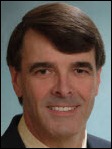
Tell me about yourself and the company.
Sunquest is the largest laboratory software company in the world. We provide solutions that enable the full automation of the hospital laboratory and also solutions that extend across the continuum of care to all areas of healthcare where lab tests are ordered, samples are collected, or results are needed to make effective clinical decisions.
They are mission critical because the decisions are made 24/7, so the solutions have to operate 24/7. Around 70% of all clinical decisions are based on lab data.
I’m the president of Sunquest. I’ve held that position for nearly seven years now. Together with the leadership team, we’ve taken Sunquest through a series of transformations and changes of ownership, but always with a focus on creating solutions that add value and result in client delight.
Tell me how the acquisition by Roper took place and what changes have been made as a result.
Roper had been looking at Sunquest and the progress that we’d been making in the marketplace for quite a little bit of time. They had approached the shareholders and entered into a conversation with the shareholders about acquiring the business. I think they’d been looking at software companies in general.
They’ve got a very large software presence across a number of industry verticals. They really liked what they saw in Sunquest with our customer base, market share, and transformation we made in the product portfolio. It was a conversation through the investors and the match that Sunquest in its profile had with Roper’s view of where they wanted to invest and how they could grow their business. It became a win-win for both the existing shareholders and for Roper that the acquisition closed.
What is most different about being owned by a private equity firm versus being a publicly traded company?
We’re only about two months into the Roper ownership, but I’ve enjoyed each of those phases of the business. When I first joined Sunquest, it was part of the Misys organization, which from the healthcare perspective, became Allscripts. It was part of Misys and then it was a private equity and now it’s with Roper.
Each owner has really helped us in the business focus on how you add value and what you need to grow the business. The questions are essentially the same. How do the shareholders help add value and how do you grow the business?
There’s a view that private equity is short-term focused. That was not my experience. They really focused on growing value in the business. That requires a strategic perspective, not just a short-term one. You don’t grow value because of your short-term focus.
It’s the same so far with Roper. They are publicly traded and there’s a view that publicly traded companies only think quarter to quarter, but all the conversations I’ve had with Roper are about how we are going to grow the business further and how we add value in the marketplace. They are really taking a longer-term view.
I think one of the main differences is, though, that Roper has a track record of owning businesses forever. Their message to employees was that this a permanent home for Sunquest. That’s really how they thought about it. When they did their due diligence, it was on the basis that they were going to own Sunquest forever. That thought about what’s the next step or who’s going to be the next owner for Sunquest has been removed — it is Roper. They’re a permanent home and we’re focused long-term on growth.
Will they be a hands-off owner who is happy with the operation as it stands or do you see them wanting change the strategic direction?
They’re what’s traditionally been called a holding company. Their businesses are all autonomous. They have around 33 businesses and Sunquest will operate autonomously within the Roper family. I continue to be responsible and the leadership team continues to be responsible for direction and running the business.
They clearly as owners — and they have invested a lot of money here — have a view as to how they have helped their existing businesses grow, their track records for growth. A lot of that is being focused on globally — international growth — and also focused in on ensuring that the channels to market are effective, not just the products. A lot of technology companies are focused on product, but that the channel to market — the sales channel and the delivery channel — are also effective.
The questions that we’re getting are, “What else do we need to do to drive international growth? Are there any more things that we need to do to be effective in the marketplace with the sales channel and delivery channel?” But otherwise, the leadership team’s all in place, the messages are that everybody is being retained — there were no synergies from the acquisition that were planned. Everybody has a role and everybody’s being kept in place.
Do you think people were surprised that the transaction was for $1.4 billion? That’s a pretty big deal in healthcare IT.
There may been some surprise externally. Internally within the company and with the shareholders, less so. We knew how much value was being created and how much the business is growing.
I think one of the things that perhaps we’ve failed to do is get our message out as clearly as we could have about how much success we have generated within Sunquest. Order intake is growing consistently in the mid to high teens year over year. That has driven obviously revenue growth. It’s driven the profitability of the business. Sunquest today is a very different organization than it was five years ago when it was acquired by private equity.
We’ve also transformed product development. We’re writing three times the lines of code per year and releasing four times the number of product releases per year that we were five years ago. The products have changed, the organization has changed, and we’ve been growing consistently every year. That represents value.
But I don’t know that we got that message out well enough for all of your readers to say, “That’s understandable, because Sunquest is on the move.” When you look at the performance of the business, it’s been on move for five years.
The company has stayed focused on lab systems even though you have offerings in radiology and in other areas. Would you still characterize Sunquest as a laboratory information systems vendor and do you see that changing?
Yes, that’s how I’d characterize it at our core. We have other products, but largely what we’ve done is looked at the workflows in and around the laboratory. We think about the lab business as being inside the four walls of the lab and having a comprehensive set of solutions that operate within the four walls. But then looking at the workflows outside of the lab but within the hospital, we’ve got a comprehensive set of solutions that extend those workflows — to the point of care, to surgery, emergency department, etc. — and then take those workflows outside to the doctor’s office.
When we looked at that, we saw a huge opportunity for growth. We went about developing those solutions and acquiring some to enable us to fully automate all those workflows associated with the laboratory and laboratory testing, but right across the continuum of care.
Then when you think about anatomic pathology and the opportunities to fully automate anatomic pathology and then move toward digital pathology and the image aspects of digital pathology, we still see this huge amount of opportunity for future growth without having to step outside of this core, very deep focus that we have in and around the lab.
What do you think is on the radar for genetic testing being used by hospitals and practices, and how might Sunquest fit?
We’re spending a lot of our time and focus and investment in and around not just genetic testing, but the things that can enable the opportunity to move from healthcare being focused on the treatment of acute illness and diagnosis to move towards prognosis and then potential for prevention. Diagnosis, prognosis, to prevention.
Our view is that genomics and genetic testing is going to be one of the enablers to be able to move in that continuum. That to my mind is going to enable the fundamental transformation of healthcare. I know there’s different views as to either when that could occur or the impact it will have, but I do think that that transition will occur and that in the future, we’ll have a very different view of what healthcare really means — that it’s not just about the treatment of illness.
I’m hearing that Epic’s Beaker LIS product is coming along fairly strongly, especially in the anatomic pathology areas, and of course Cerner and Meditech and other vendors offer a full line of products that include a laboratory information system. What do you think is the future for best-of-breed LIS products?
I think it’s very strong, as evidenced by the growth that we’ve already exhibited in the last five years. During the time when there was a lot of focus on the enterprise and Meaningful Use, etc. we’ve been growing very substantially.
The way I view this is there is so much complexity in and around the lab and there’s so much opportunity still to fully automate that area. That really does require a deep understanding of the workflows and a deep understanding of the needs in that area. I do not personally see the compromise that comes from an enterprise or a “one size fits all” approach in and around the lab.
One thing that’s very high on my agenda is the focus on quality in healthcare and quality in terms also of software solutions. Whether software solutions such as the ones Sunquest and our competitors provide are already medical devices. There seems to be a lot of discussion about that.
I am firm believer and an advocate of the fact that the types of solutions that we provide and the software solutions that are used in the enterprise are medical devices. If they’re not, I don’t know what other definition you could apply. These are clearly products that are used to help improve the effectiveness of healthcare, to help provide information that enables physicians and others to make clinical decisions.
I’m a strong believer that these are medical devices. I really don’t understand the position that others seem to take that they’re not medical devices, and therefore they should not be subject to things like FDA review. I take a contrary view to most of my colleagues on that.
Supposedly the vendors convinced the FDA years ago that it would police itself without FDA involvement. FDA seems to be signaling at least some level of interest, which might be a positive development for companies like Sunquest that already have experience in working under FDA’s guidelines. Do you see FDA’s view changing?
I don’t whether the view will change. I agree with you — there seems to be some dialogue occurring, but perhaps going a little softly on that is to whether they would really get into this area. I know there’s a lot of discussion, but I don’t know whether they will change their view.
I do think it would good for Sunquest. We have blood bank products that are classified as medical devices. We’ve chosen to register virtually every product we’ve got as a medical device. We are subject to FDA audits, and we see that as a positive as opposed to a negative.
On our last FDA audit, we had zero observations. That’s a pretty high standard that we set. We also had zero observations from our ISO audit. We see a robust quality system, repeatable and demonstrable process documentation, and adherence as a core of delivering high-quality solutions that operate as advertised. We see the benefit to the business. We would see it as a benefit, of course, if others were asked to perform to the same high standard.
A lot of healthcare IT software companies operate more like they’re selling general business software. They don’t have the ISO certification and they don’t want any part of FDA oversight. In your mind, would patients be safer if both of those were standards for companies that sell software that impacts patient care?
Well, I don’t know if I would go there because I’m not sure. I can’t really talk to any other companies in how they validate that their products are high quality. I just know that in our case, we use the quality system and the compliance to the ISO standards and validation requirements — we’ve got a number of ISO certifications — and the FDA audit.
We use those as a guide post to having a quality system, which is a core business system within the company. I feel a lot more comfortable and I can sleep a lot more soundly knowing that we have a very, very robust quality system — that third parties audit and concur that its is a very solid system — and that we are operating very effectively to that system. Then we can demonstrate that the quality of the solution is to a very high standard as well.
You mentioned Meaningful Use. What parts of it do you think are most relevant to laboratory information systems?
There are several areas. In Stage 1, they were in the optional list. Stage 2 is moving them into core. If and when Stage 3 gets finalized, they’ll all be core.
There’s a number of different things like reportable results, which sounds pretty straightforward, but we’ve been interfacing out to the CDC and others to provide reportable results for years. Even some of our competitors with lab solutions find that difficult. To do that out of an enterprise solution is extremely difficult. The lab has the very granular information that we can utilize to move the right results to the right place.
There are a number of different things, but I think reportable results is one of them. With Stage 2, it’s going to get increasingly important.
Then we have LOINC, which is to enable information to be shared. Again, there’s a lot of detail around LOINC and lab-to-lab and enterprise-to-enterprise communications. I believe the best-of-breed lab solutions provider is best positioned to meet that need and to be able to provide those solutions.
I’m curious – do you have any idea what percentage of hospitals are using best-of-breed laboratory information systems?
I can only guess. My guess is over 50 percent.
Where did your past growth come from and where do you see it coming from in the future?
It’s probably several areas. As we’ve invested and expanded our portfolio, there’s growth around what the laboratory calls outreach. It is really connectivity to the physician office and enabling physicians in the community to have meaningful interactions with the lab — easy ordering, rapid results, effective management of the samples into the lab. We have an outreach suite, which enables the lab to manage those relationships on an effective business professional level. That’s been an area of growth.
Within the hospital, automating the workflows back from the point of care — when lab tests are ordered, samples collected, and results come back. We’ve got solutions that have been demonstrated by our customers to eliminate error in those processes. That’s been a significant area of growth.
The other is we have a large footprint. As networks standardize, they standardize on Sunquest for their lab within the footprint. We have a lot of additional hospitals that convert to Sunquest within our base, but it’s the new hospitals that have converted to Sunquest that’s been part of our growth.
Then these applications in anatomic pathology — automation of anatomic pathology, sample management in anatomic pathology.
There’s a fairly broad swath of solutions that have represented that growth.
A fair amount of the interest in the interoperability side is either preventing ordering of duplicate tests or doing alerting on abnormal results. Do you see a lot going on, or do you hand off to other systems for that?
No, we have those solutions. We do that. We’re constantly enhancing the solutions with new releases and new versions. Those things you mentioned we’ve considered as core capabilities for a best-of-breed lab solution for many years.
Are you expecting or experiencing international growth?
Yes. We’re expecting and experiencing international growth — both of the above.
We’ve made an acquisition in the UK. We’ve got a great solution over there which does a lot of what you’ve just asked about – alerting about orders and resulting. It’s in use by 65 percent of the national health hospitals in the UK and nearly 50 percent of the doctors’ offices use that particular solution.
We have around 300,000 users in the UK, but we’re also expanding internationally, putting more resources in. We recently added new customers in Australia and we’re looking for further expansion in the international marketplace.
Any concluding thoughts?
We’ve been very successful. We’re growing and we’ve also created a lot of value, but I think that value is really reflected in the solutions and in the quality of the solutions that we provide. I feel very fortunate to be in the position I’m in and to have had the opportunity to take some steps forward in this way.




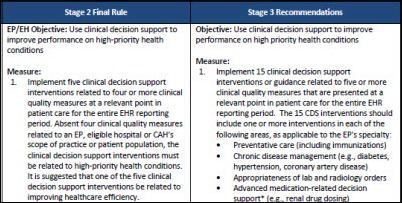



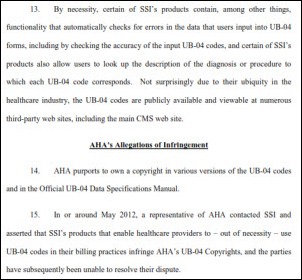







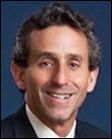


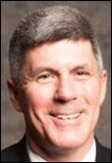
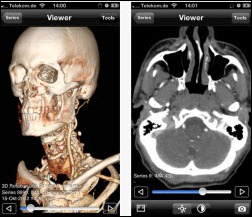


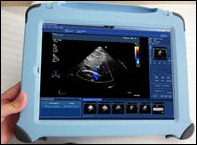
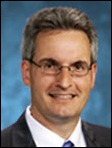


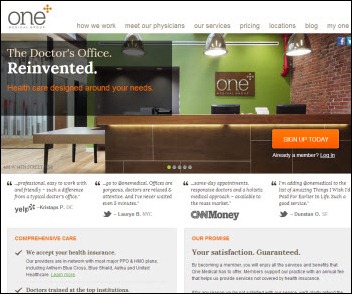

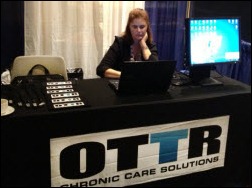




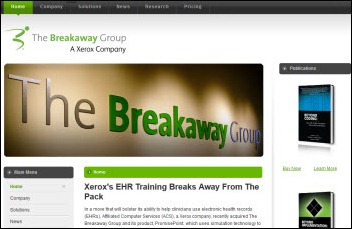

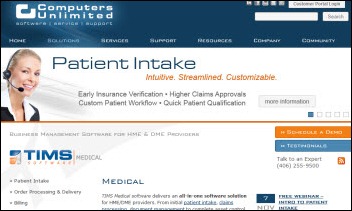
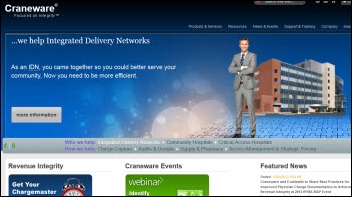
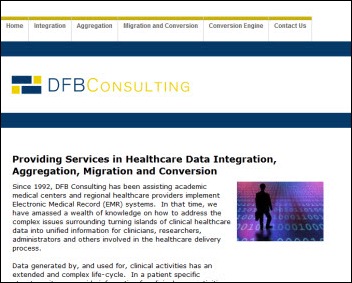
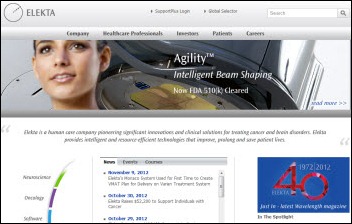

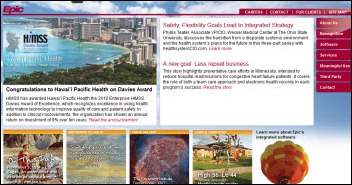
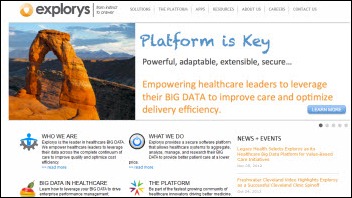

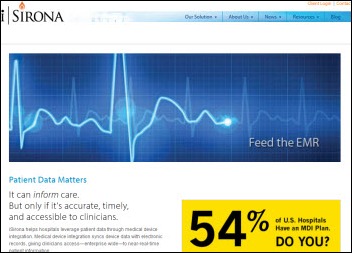


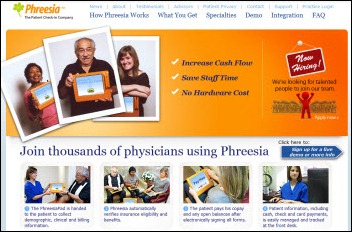
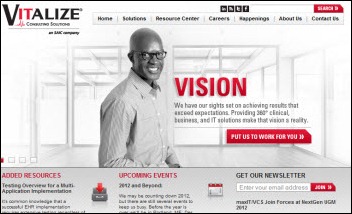

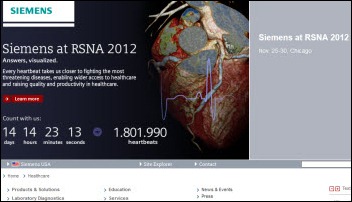
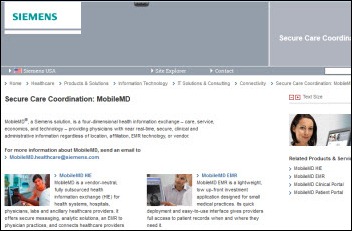
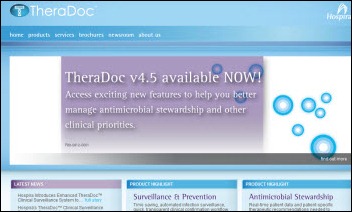


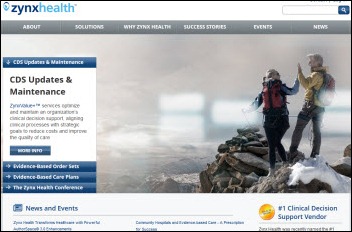

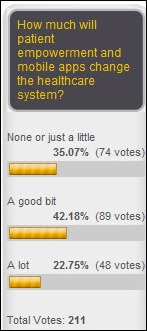


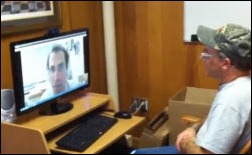

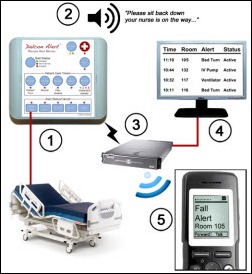
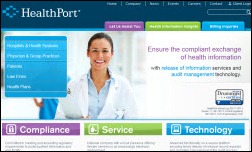
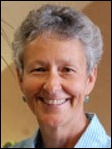




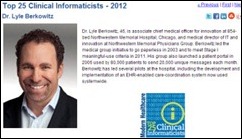


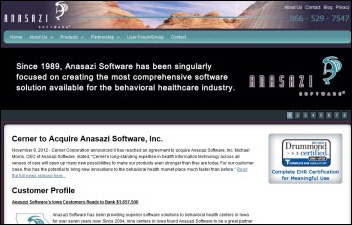


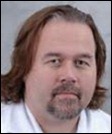
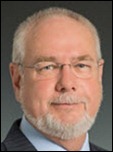


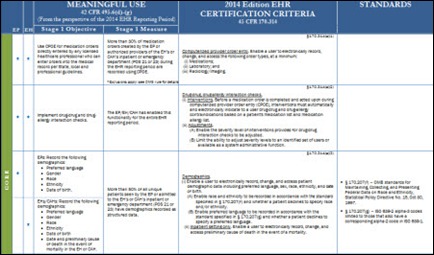


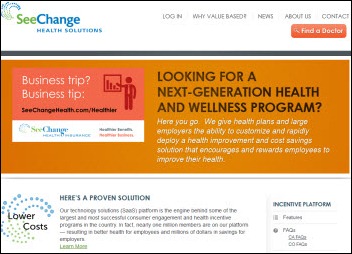
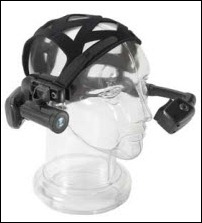





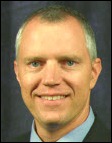

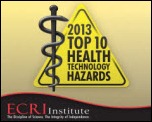
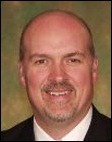

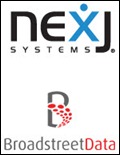

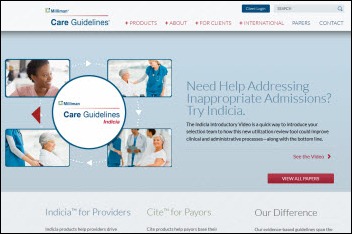
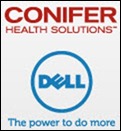




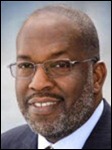

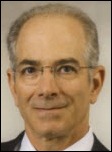
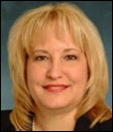
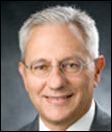



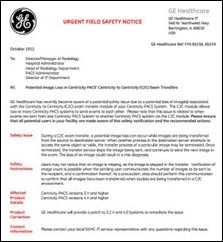
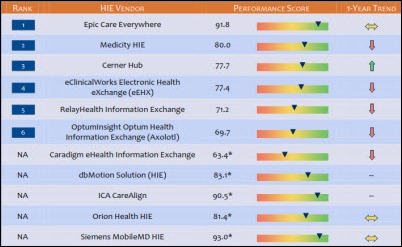

Merry Christmas and a Happy New Year to the HIStalk crowd. I wish you the joys of the season!